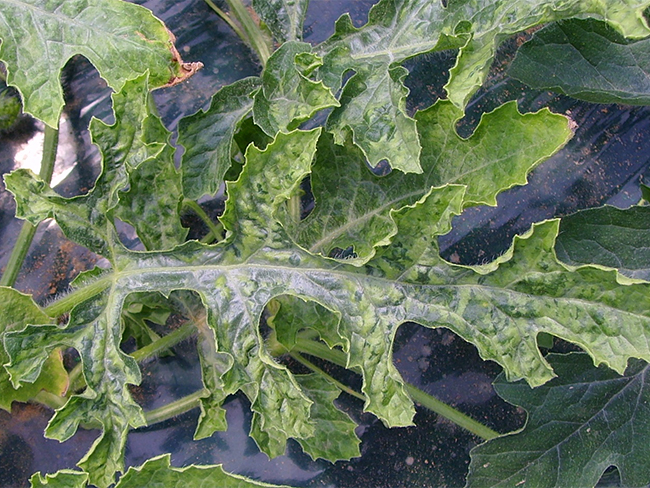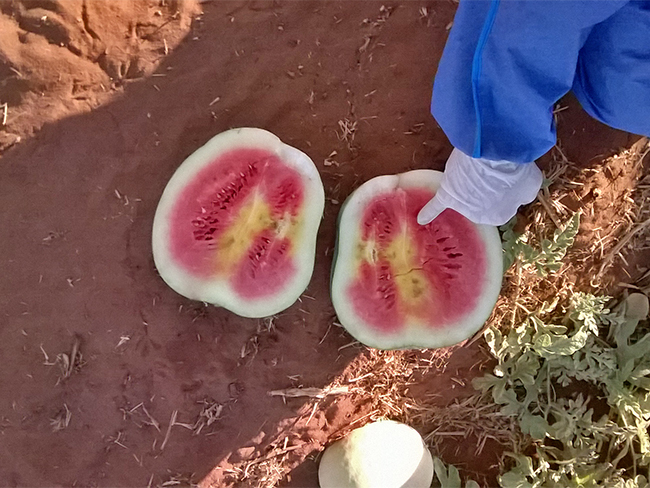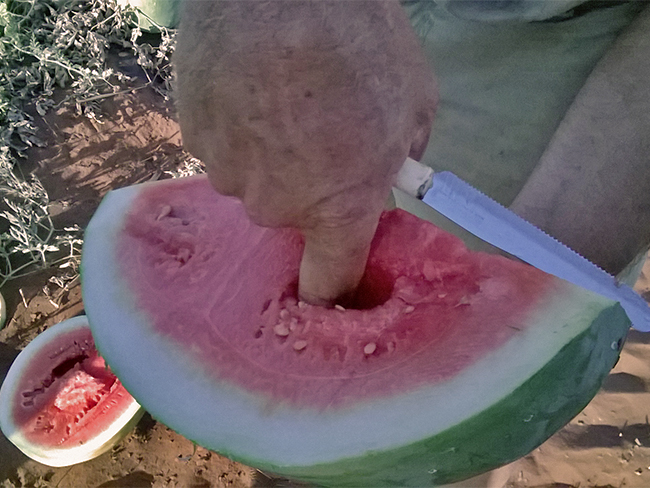Cucumber green mottle mosaic virus
About cucumber green mottle mosaic virus
What the virus affects
The virus attacks plant cells through minute plant wounds.
It infects watermelon, cucumber, melons, zucchini, pumpkin, squash, bitter gourd, and bottle gourd - long melon - and some other species.
There are at least five strains of the virus, and symptoms can vary between hosts.
Other mosaic diseases, caused by potyviruses, are known to occur in northern Australia and can cause similar symptoms. This makes it difficult to identify it by sight. It can only be conclusively established by laboratory testing.
What affected plants look like
Infected watermelon plants can look bleached - the leaves having mosaic-like mottling - and the plant may be stunted.
Affected cucumber plants may also wilt and the runners, or the whole plant, may die prematurely.
Symptoms can include fruit abortion, uneven ripening, internal yellowing, breakdown of the flesh, and possibly a dirty red discolouration of the flesh. Infection may also cause fruit malformation.
The combined effects of the virus can cause substantial crop losses.
How it spreads
The virus can spread easily. The virus can stay alive for an extended time in plant debris and soil and on vehicles, equipment and tools.
Contaminated seed and soil are the most common ways the virus can be introduced into a crop. It can be transferred by sap or infected seeds, and remain dormant within the seed coat.
Regular handling of infected plants, such as when pruning or staking, can speed up the spread of the virus. Even a tiny injury caused by contact between plants can be enough to transfer the virus from one plant to another.
Ways it can spread include the following:
- by mechanical transfer, especially in protected or high-input culture systems where plants are frequently pruned, staked, handled or touched. This can occur via contaminated machinery, clothing, or even the hands of people who have come in contact with infected plants
- in field production by machinery and pickers
- infection of roots in soil that is contaminated with infected plant debris. The virus can spread through root-to-root contact
- in water or in nutrient solutions in soilless culture
- packaging materials such as bins used for harvesting, storage or marketing fruit - avoid recycling packaging materials
- infected rootstock plants and grafts
- seed harvested from infected plants
- insects such as pollinating honey bees.
Symptoms
Seedlings
It is hard to identify virus symptoms by sight, as they are very similar to symptoms caused by other cucurbit viruses.
Symptoms on young seedlings may be indistinct or difficult to recognise as being caused by a virus. In severe infections, embryonic leaves may become yellow, but symptoms may not be apparent until more mature leaves emerge.
Leaf
On young leaves, vein clearing and crumpling may be visible, while mature leaves may show mottling or mosaic patterns, or look pale, yellow, or bleached.
Fruit
Fruit may not show symptoms on the outside, or else can become severely spotted or streaked and distorted, especially during high temperatures.
In some cases, fruit with no signs on the outside can be discoloured or rotting on the inside. This is especially true for watermelon. In such cases, the watermelon fruit stalk has a dead area on it.
Print all pages in this section
Give feedback about this page.
Share this page:
URL copied!


